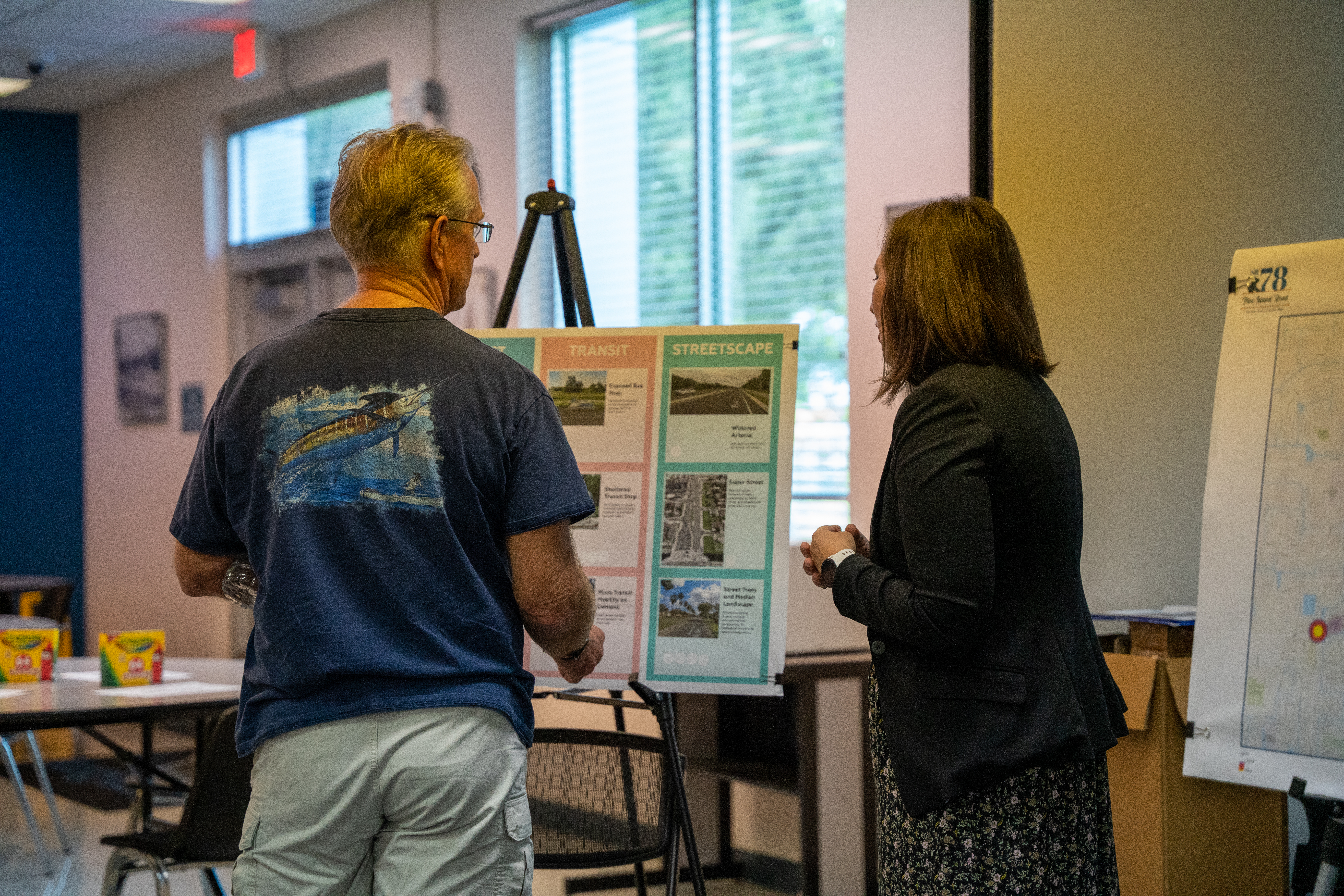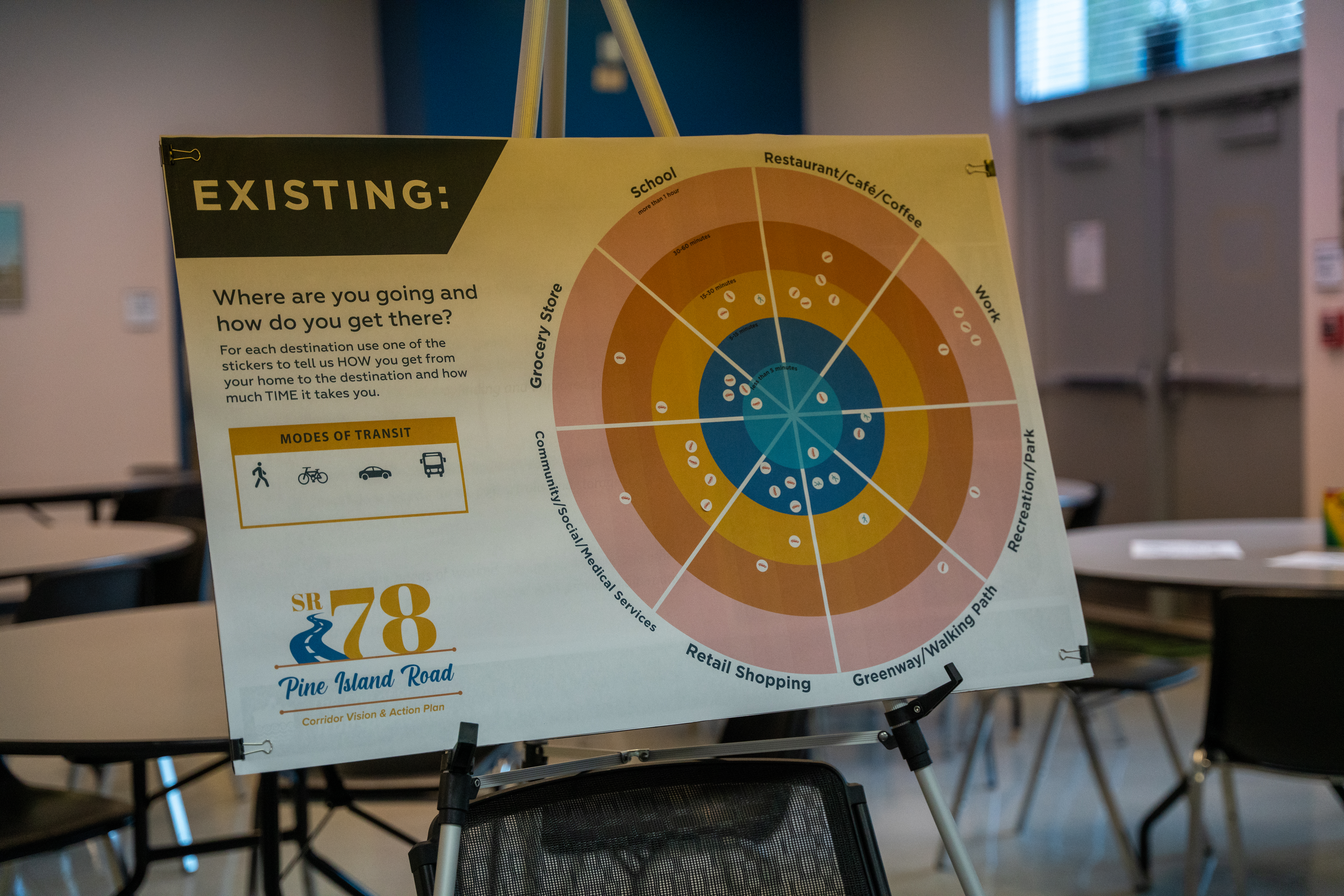The Florida Department of Transportation hosted a public workshop for the Pine Island Road corridor vision and action plan study at Cape Coral Technical College on Thursday.
The purpose of the study is to help the city and Lee County community develop a vision plan for the State Road 78/Pine Island Road corridor, guiding transportation and land use decisions during the next 50 years.
The nine-mile study area begins at Burnt Store Road and extends to U.S. 41, including portions of Cape Coral and unincorporated Lee County.
The workshop was held to solicit feedback from the community concerning its desire for the future of the corridor.
“It’s very preliminary, there’s not a whole lot of plans, all we’re doing is trying to get a good understanding of what the local community wants,” said Adam Rose, communications specialist for the Department of Transportation. “We don’t necessarily all live in the direct vicinity of this area, so it’s harder for us to understand what the basic needs are, what are some issues and what would be better.”
Rose said the workshop consists of taking the time to get feedback and better understand pedestrian habits and possible congestion relieving factors.
Materials were presented at the workshop displaying existing crash spots, sidewalks, and transit, leading to an interactive portion where residents identified what mode of transportation they currently use to get to certain services or needs and how long it takes them to get there. The most common existing mode of transportation was automobiles, traveling varying distances.
Many residents noted they would like to have the option to walk or bike in addition to using their automobiles.
Desired walkability proved to be true for Pine Island resident Deborah Swisher-Hicks, as she mentioned it on the survey provided for residents to give feedback.
“Walkability, safety for some of the pedestrians that do walk and then beautify it,” she said. “It’s very cement looking, and it would be nice to add some greenery and some shade for the walkers, as well as having the lights be timed better.”
An interactive printed aerial of the study area allowed residents to put color-coded stickers on places along the corridor they would like to see improvements regarding pedestrian, bicycle, transit, or car needs. Residents pointed out areas that need bike lanes, have red light runners, need sidewalks, or have trail gaps, among other issues.
“There’s no areas that we’re worried about, we just want you to come in and look,” Rose said. “If there’s an area, you’ll start seeing the same thing pop up by a bunch of different people and that tells us that that is something we need to look into.”
The project is in the planning phase, the first of five steps in FDOT’s project development process. The next step is the project development and environment phase, which assesses potential impacts of proposed improvements to the social, economic, natural, and physical environment. The following phase is design, right of way and then construction.
The timeline of the project is unknown, with Rose adding that in a perfect world, it could take about eight to 10 years.
FDOT will host a live online workshop Thursday, requiring advanced registration, for those who were unable to attend on Thursday night.
“We’re really trying to push people to get some input,” Rose said. “Bad, good, whatever, we just want it, because we don’t know if we aren’t told so this is the time. We’re in this nine-mile stretch, what is it that we need to improve?”






